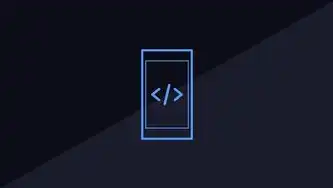随着互联网技术的飞速发展,HTML5 已经成为构建现代网页和应用程序的事实标准,HTML5 提供了丰富的语义化标签、多媒体支持以及更强大的客户端脚本功能,使得开发者能够创建更加丰富、互动且跨平台的用户体验。

图片来源于网络,如有侵权联系删除
本文将深入探讨 HTML5 博客网站的源码实现,包括页面结构设计、前端交互逻辑、后端数据处理等方面,通过详细的代码示例和分析,帮助读者理解如何利用 HTML5 的特性来构建高效、美观的博客网站。

图片来源于网络,如有侵权联系删除
页面结构与布局
1 网站首页
首页顶部导航栏
<header>
<nav id="navbar">
<ul>
<li><a href="#home">Home</a></li>
<li><a href="#about">About</a></li>
<li><a href="#contact">Contact</a></li>
</ul>
</nav>
</header>
首页主要内容区
<main>
<section id="posts">
<!-- 动态加载文章列表 -->
</section>
</main>
2 文章详情页
文章详情页头部信息
<header>
<h1>文章标题</h1>
<p>发布时间:2023-04-01</p>
</header>
展示
<section>
<article>
<p>...</p>
</article>
</section>
前端交互与动态更新
1 使用 JavaScript 实现实时数据绑定
数据绑定示例
const posts = [
{ title: "First Post", content: "This is the first post." },
// 更多文章对象...
];
// 将文章渲染到页面上
function renderPosts() {
const postsContainer = document.getElementById("posts");
posts.forEach(post => {
const articleElement = document.createElement("article");
articleElement.innerHTML = `
<h2>${post.title}</h2>
<p>${post.content}</p>
`;
postsContainer.appendChild(articleElement);
});
}
renderPosts();
2 AJAX 异步请求获取后台数据
发送 GET 请求获取最新文章
fetch("/api/posts")
.then(response => response.json())
.then(data => {
console.log(data); // 处理返回的数据
})
.catch(error => console.error('Error:', error));
后端数据处理与服务接口
1 Node.js 与 Express 框架搭建 RESTful API
创建简单的 RESTful API 路由
const express = require('express');
const app = express();
app.get('/api/posts', (req, res) => {
// 从数据库查询所有文章并返回给客户端
});
app.listen(3000, () => {
console.log('Server started on port 3000');
});
2 MongoDB 数据库存储与管理
设计 MongoDB 集合结构
{
"_id": ObjectId("628f8b4c9d7e8b0001d0f0f0"),
"title": "Introduction to HTML5",
"content": "HTML5 是一种新的 Web 标准...",
"publishedDate": ISODate("2023-03-15T00:00:00Z"),
"author": "John Doe"
}
安全性与性能优化
1 XSS 攻击防护措施
对输入数据进行转义处理
function escapeHtml(text) {
const map = {
'&': '&',
'<': '<',
'>': '>',
'"': '"',
"'": '''
};
return text.replace(/[&<>"']/g, function(m) { return map[m]; });
}
// 示例使用
let safeText = escapeHtml(userInput);
2 图片懒加载技术提升页面加载速度
实现图片懒加载效果
<img src="placeholder.png" data-src="actual-image.jpg" alt="Description" class="lazyload">
<script>
document.addEventListener("DOMContentLoaded", function() {
var lazyImages = [].slice.call(document.querySelectorAll("img.lazyload"));
if ("IntersectionObserver" in window) {
let lazyImageObserver = new IntersectionObserver(function(entries, observer) {
entries.forEach(function(entry) {
if (entry.isIntersecting) {
let lazyImage = entry.target;
lazyImage.src = lazyImage.dataset.src;
lazyImage.classList.remove("lazyload");
lazyImageObserver.un 标签: #html5博客网站源码



评论列表